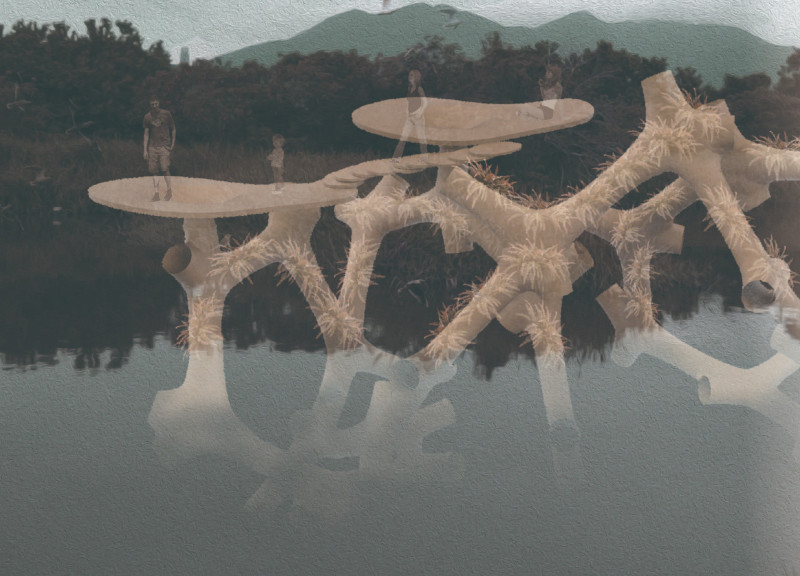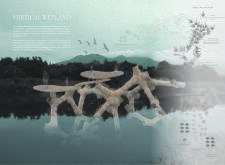5 key facts about this project
The Vertical Wetland project presents a thoughtful solution to the challenges of urban water pollution. Located within a busy urban area, the design emphasizes the need to restore the relationship between people and nature. Its primary function is to filter contaminated river water while promoting ecological awareness and community engagement.
Design Framework
The project features a vertical wetland system composed of distinct functional layers designed to effectively purify water. At the bottom, a sand layer acts as a natural filter, removing impurities from the water that flows through. Above this layer is a high-density porous permeable layer, which supports efficient drainage and optimizes water movement. This well-structured approach allows for the removal of pollutants, laying the foundation for an effective ecological system.
Plant Integration
Plants play a crucial role in the vertical wetland's operation. Ferns are incorporated into the design for their ability to improve air quality. These plants absorb harmful substances and release beneficial microorganisms, helping to cleanse the air. By attaching these ferns to the tubular surfaces, the design highlights their importance in both the air and water purification processes. This relationship underscores how plants can serve practical functions while enhancing the environment of urban settings.
Biodiversity Creation
The design also encourages biodiversity. It is not only for human use but also establishes a habitat for various wildlife, including fish and birds. This element fosters a unique dynamic between urban life and nature, offering a richer experience for residents and visitors alike. This integration cultivates a healthier ecological environment, supporting both animal life and plant systems in an urban area.
The final design detail features the growth of ferns that visually benefit the structure. The layering of different elements creates an engaging urban presence while serving multiple ecological functions. The result is a functional system that enhances both the environment and the quality of life for those in the community.



















































